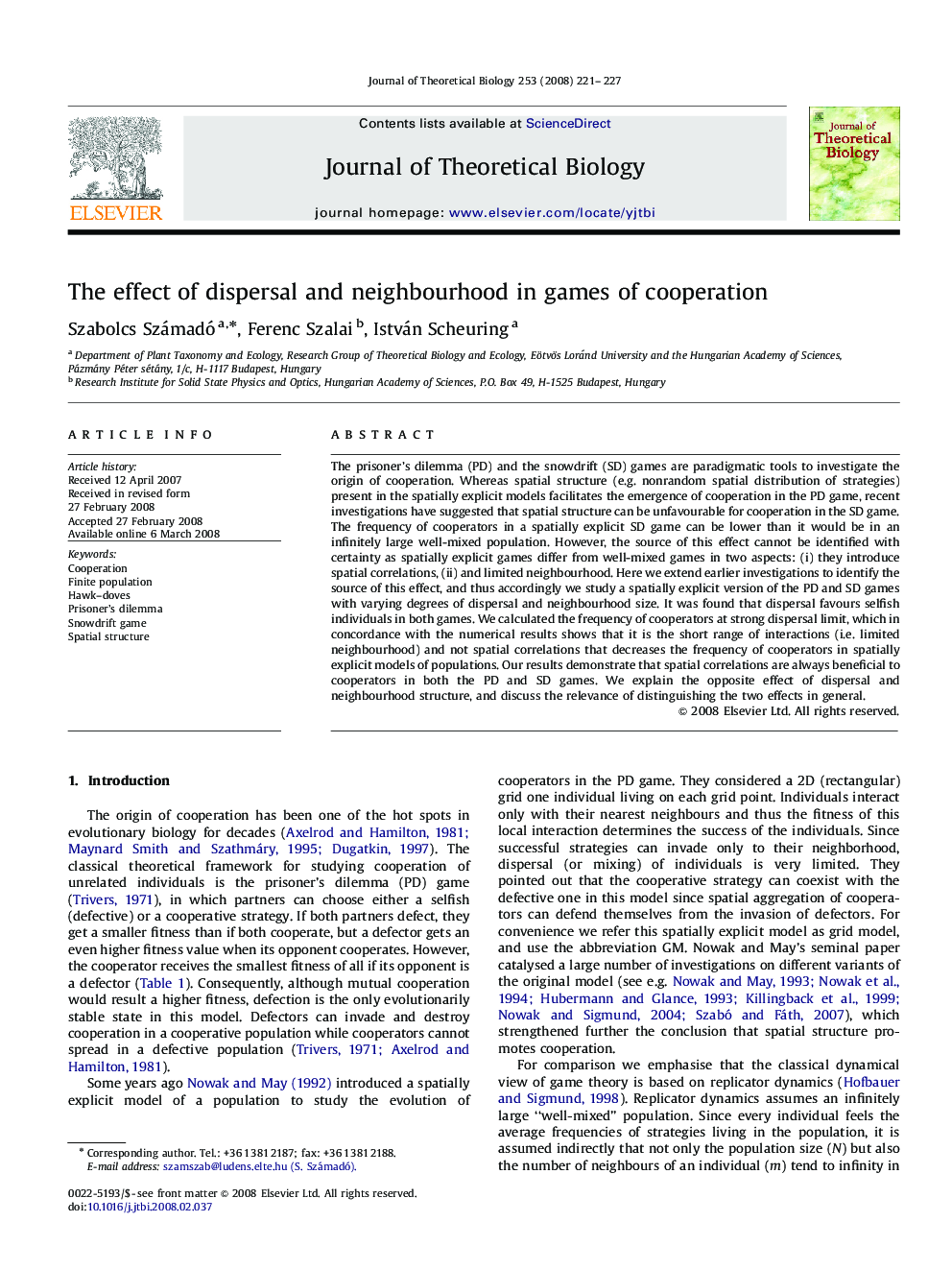| کد مقاله | کد نشریه | سال انتشار | مقاله انگلیسی | نسخه تمام متن |
|---|---|---|---|---|
| 4498450 | 1318983 | 2008 | 7 صفحه PDF | دانلود رایگان |

The prisoner's dilemma (PD) and the snowdrift (SD) games are paradigmatic tools to investigate the origin of cooperation. Whereas spatial structure (e.g. nonrandom spatial distribution of strategies) present in the spatially explicit models facilitates the emergence of cooperation in the PD game, recent investigations have suggested that spatial structure can be unfavourable for cooperation in the SD game. The frequency of cooperators in a spatially explicit SD game can be lower than it would be in an infinitely large well-mixed population. However, the source of this effect cannot be identified with certainty as spatially explicit games differ from well-mixed games in two aspects: (i) they introduce spatial correlations, (ii) and limited neighbourhood. Here we extend earlier investigations to identify the source of this effect, and thus accordingly we study a spatially explicit version of the PD and SD games with varying degrees of dispersal and neighbourhood size. It was found that dispersal favours selfish individuals in both games. We calculated the frequency of cooperators at strong dispersal limit, which in concordance with the numerical results shows that it is the short range of interactions (i.e. limited neighbourhood) and not spatial correlations that decreases the frequency of cooperators in spatially explicit models of populations. Our results demonstrate that spatial correlations are always beneficial to cooperators in both the PD and SD games. We explain the opposite effect of dispersal and neighbourhood structure, and discuss the relevance of distinguishing the two effects in general.
Journal: Journal of Theoretical Biology - Volume 253, Issue 2, 21 July 2008, Pages 221–227